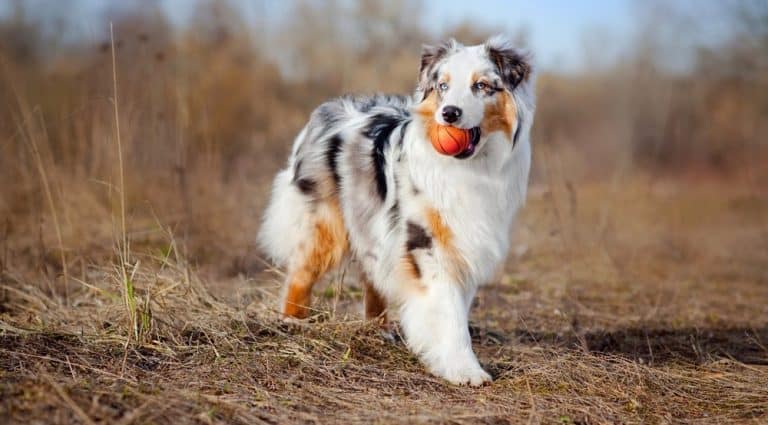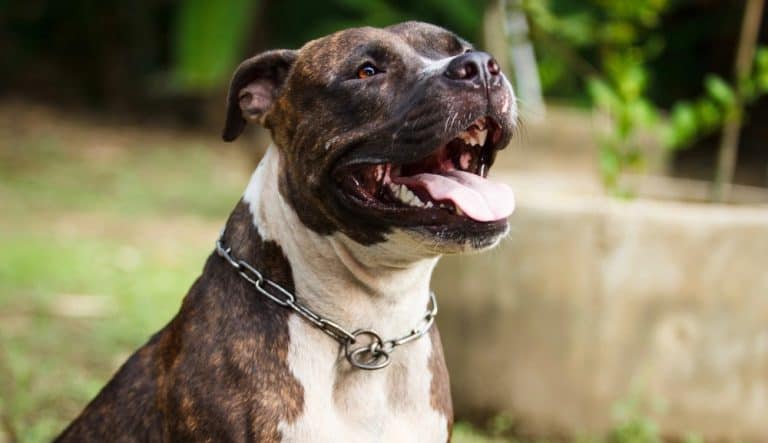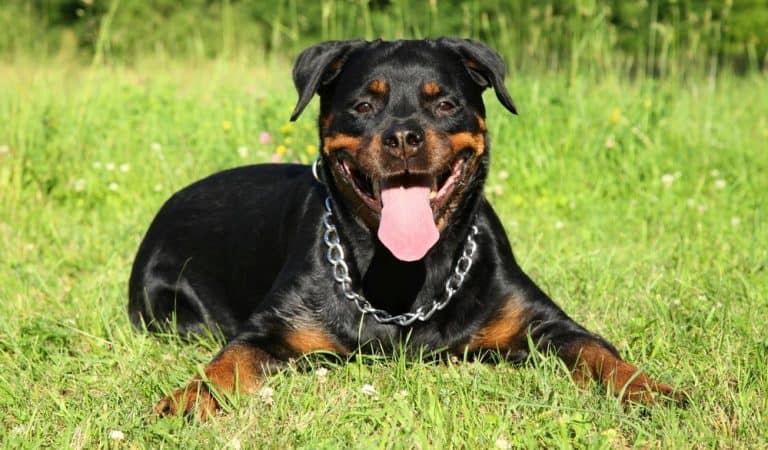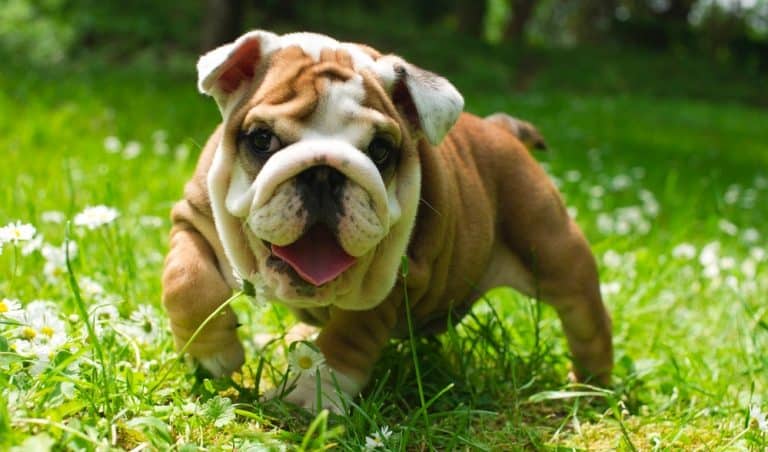Do Great Pyrenees Shed – Great Pyrenees Shedding
If you’re a fan of the gentle giants of the doggie world, you’re sure to have spotted the beautiful Great Pyrenees and thought about how great it would be to have one yourself.
There are the intelligent eyes, the gentle manner, and that gorgeously fluffy, thick white coat. It’s when you get to this part of the package that you begin wondering: do great pyrenees shed?
To be blunt, the answer is “yes.” But the pleasure of keeping Great Pyrenees will make a little extra work more than worthwhile.
In this article, we’ll go in-depth on shedding as it applies to the Pyr, what you can do about it, and how to keep your dog’s luxurious coat in good condition.
We’ll also run you through some Great Pyrenees FAQs that may have been on your mind in the hope of resolving all your grooming-related questions and more.
But to get things started, let’s come to a quick conclusion: Great Pyrenees shedding goes with the territory. Manage it correctly, and it won’t be too much of a drawback.
Do Great Pyrenees Shed A Lot?
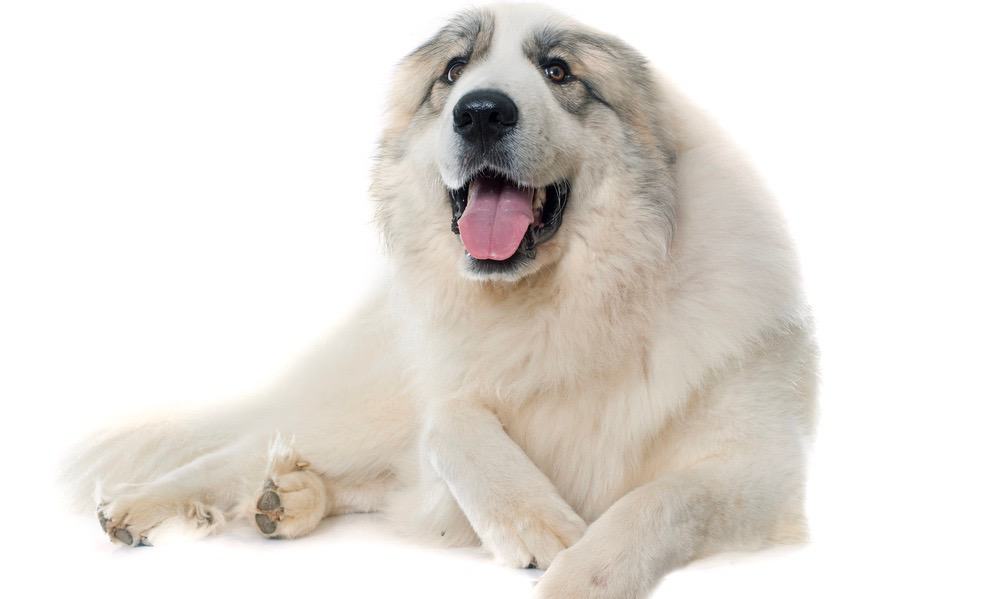
Fun fact. Great Pyrenees are classed as “medium to heavy” shedders. So, in terms of shedding, there are definitely furballs who are going to shed even more heavily. From a less academic perspective, I’d say they shed quite a lot most of the year and then go crazy with shedding in spring.
But here’s the catch. If you want a big fluffy dog, you’re going to be dealing with dog hair. You’ll be dealing with it even if you opt for a short haired breed.
Admittedly, your Pyr is going to shed far more copiously and obviously than a Chihuahua would, but dog hair and dog ownership go hand-in-hand and fluffy dogs are sure to produce fluff.
The fact of the matter is that Great Pyrenees don’t have particularly high-maintenance coats. The big bugbear with fluffy breeds is that shedding leads to mass of tangles, but the Pyr’s coat rarely if ever gets matted.
Do Great Pyrenees shed a lot? You bet they do, but proper grooming is the answer to that problem, and that’s going to amount to regular brushing which isn’t as much of a chore as you might expect.
Great Pyrenees Shedding Frequency
There are two main types of shedding to distinguish between here: the daily shed and the seasonal ones.
Your dog will shed a little every single day. Dog hair isn’t immortal and hair is getting replaced pretty much all the time – out with the old, on with the new. Your own hair does much the same thing.
Then there’s the seasonal shedding. Great Pyrenees have a weatherproof outer coat and a fluffy, insulating undercoat. In winter, it needs to be thicker. In summer, it needs to be thinner. Your dog changes his coat accordingly, and that’s why spring sheddings are so impressive.
The Main Reasons Great Pyrenees Shed
Let’s sum up the reasons why your Great Pyrenees sheds and the only time it should really be a worry to you. Daily shedding is going to happen. Good grooming will reduce it.
Seasonal shedding, particularly in spring is a fur-storm of note! Up the frequency of grooming and use a few extra tools to get to the loose undercoat. Both of these types of shedding are par for the course.
However, an unhealthy dog will also tend to shed more. So, if your dog seems a bit listless AND is shedding more than you’d expect, it’s time to visit a vet for a checkup.
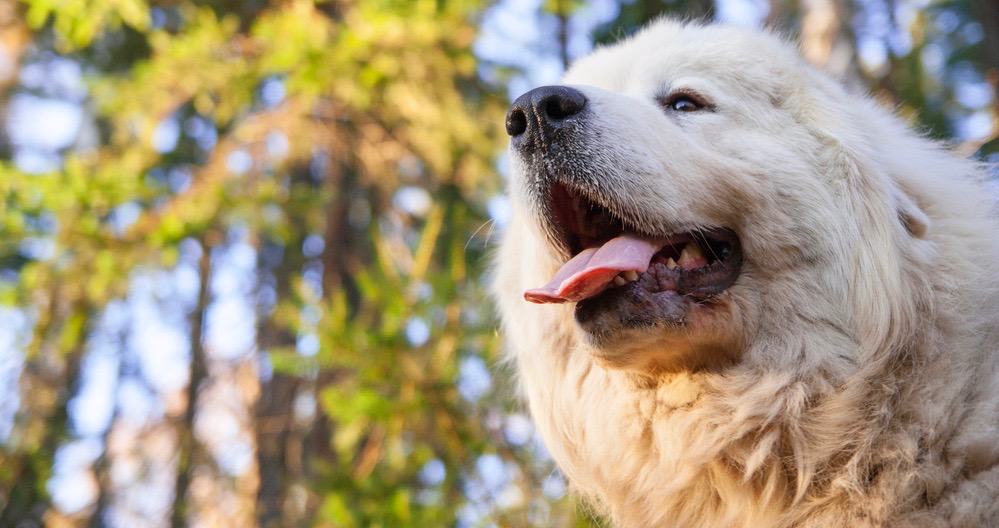
Then there are a few situations in which your dog sheds more because of how you’re looking after him. Dry skin is among these. So, you’re not going to start slathering moisturizer on your dog – but you do need to make sure he’s getting a diet that’s conducive to a healthy coat.
Overbathing is an absolute no-no. That dog is white, and when the natural oils in the coat are well-balanced, it will stay that way without bathing. If you absolutely have to bathe your dog, choose a gentle shampoo and don’t do it too often.
How To Manage Your Great Pyrenees Shedding
Bathing
Bathing your dog will not reduce shedding. In fact, it may even make matters worse. It’s almost miraculous how your Great Pyrenees’ coat stays snowy white all on its own. It really is self-cleaning when it’s in good condition.
There also seems to be some sort of natural balance in the oils coating the hair that helps this along. All I know for sure is that once you’ve shampooed, there’s a period when your dog stops being self-cleaning – possibly why so many dog owners make the mistake of overbathing.
Ironically, the more you bathe your dog, the more you need to bathe him to keep him clean and that upsets the natural balance of his coat. Save bathing for when he’s managed to roll in muck and you absolutely have to do something about it.
Brushing
Let’s cut to the chase. We’ve already ascertained that your Great Pyrenees will shed for a variety of reasons. Brushing is the absolute best way to manage shedding.
That’s not to say you’ll catch every stray hair – but it will reduce the amount of fur you find all over your home (and yourself.)
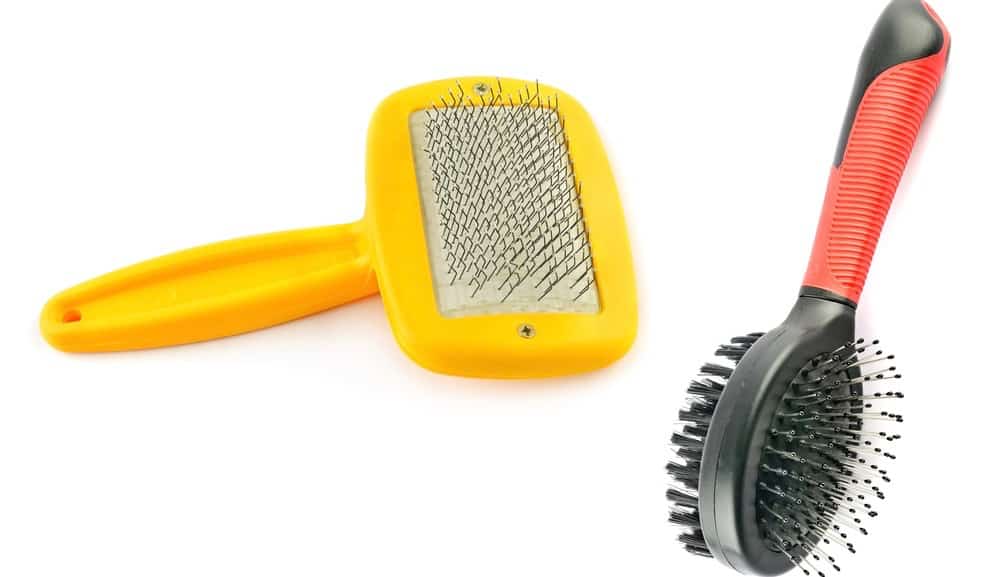
A bit further on, we’ll look at the grooming issue in greater depth, but for now, let’s say that you will be investing in grooming tools and you’ll be going through the grooming ritual twice a week to handle regular shedding and increase its frequency to every second day during heavy shedding.
Shampoo
This point is important because, when you do use shampoo on your Pyr, you need to be very careful about your choice or your dog will shed more than ever before.
A dog’s skin works very differently from your own skin, so grabbing a bottle of stuff that leaves your scalp and hair feeling good isn’t going to cut it. It’s probably too harsh for the Great Pyrenees.
Pop in at your local vet shop and choose a really good, veterinarian-approved brand that’s good for dogs with sensitive skins. The last thing you want is a product that will dry out the skin.
It will ultimately make your dog’s fur brittle and add to the clouds of hair he’s capable of shedding.
Diet
Good nutrition and a healthy skin go hand-in-hand, even for humans. With dogs, we can add a healthy coat to the equation. With Great Pyrenees already shedding quite a lot, you don’t want to add to that by trying to get away with cheap dog food.
Choose dog food that contains lots of Omega fatty acids, preferably from animal sources. It will cost more, but it’s worth the price tag.
And because high quality dog foods contain fewer “filler” ingredients that just add bulk without adding nutrition, it might not be as costly as it looks. Less really can be more!
Supplements
If you’re feeding your Great Pyrenees a complete, well-formulated dog food, supplements may be altogether unnecessary.
The only real way the body has of storing extra nutrition is through fat – anything else just passes through the system unless it’s necessary and can be used.
Essentially, this means that if the supplements aren’t necessary, they’ll probably fall in the latter category and just pass through without touching sides.
Having said that, there’s no real harm in trying vet-approved supplements and seeing how it goes.
If the supplement helps to keep skin and coat healthier, it may even reduce shedding and improve your pet’s overall condition. If it doesn’t, you know where that extra nutrition is ending up and you may as well save your money.
Great Pyrenees Coats
Before we continue, let’s stop for a minute and admire the marvel which is a Great Pyrenees dog’s coat. It’s really a wonderful adaptation that helps your dog to cope well with all weathers. Your Pry can go and stand in the rain, and the water will never really penetrate to the skin.
Each of the two layers of fur, the silky overcoat and the fluffy undercoat, does a remarkable job that makes Great Pyrenees resistant to the cold and wet. They’re not overly fond of hot weather, but thanks to the loss of winter undercoat as the days lengthen, they usually tolerate it quite well.
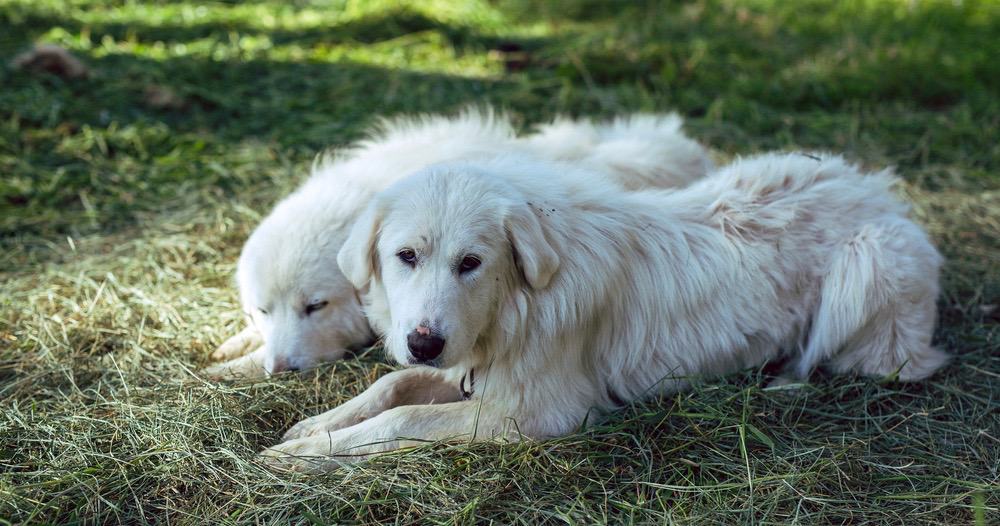
So, let’s take a second away from discussing shedding and just enjoy the idea of how pleasant it is to bury your fingers in that soft coat. He’s loving it. So are you.
What Is The Difference Between Shedding And Fur Loss?
There is a distinction to be made between fur loss and shedding. Shedding is normal and natural. Fur loss isn’t.
When your dog is shedding heavily, you can easily come away with handfuls of fluff every time you touch him. If you aren’t brushing your Pyrenees enough, it may even seem to come out in clumps.
But if the hair is coming off very unevenly, or your dog suddenly starts to shed more heavily than usual, it might be a symptom of ill-health.
If you have any concerns in this regard, it’s time to head for your local veterinarian to find out whether anything’s the matter.
Do Spayed & Neutered Great Pyrenees Shed Less
Female Great Pyrenees shedding is often more copious when in heat. However, a veterinary study found that in general, spaying or neutering only resulted in coat changes in about 20 percent of dogs. These dogs tended to have more “wooly” hair which could, arguably, mean more shedding after spaying or neutering.
There are also recorded instances of females shedding more than normal directly after being spayed before shedding returns to normal.
Scientists say that hormonal changes can affect the coat, but judging from my research, I’d say this is a minor influence on shedding rather than anything to get excited about.
What we do know for sure is that spaying and neutering makes pets easier to live with, less likely to roam, and could prolong their lives.
Do Great Pyrenees Puppies Shed More Than Adult Dogs
Somewhere between the ages of 4 and 12 months, your fluffy Great Pyrenees undergoes a once-off coat change from “baby hair” to its proper adult coat. Once that’s over and done, the normal rhythm of shedding applies.
The changeover won’t be instantaneous, so there will be a few months during which your loveable fur friend sheds rather a lot. Call it your initiation into managing shedding, if you like.
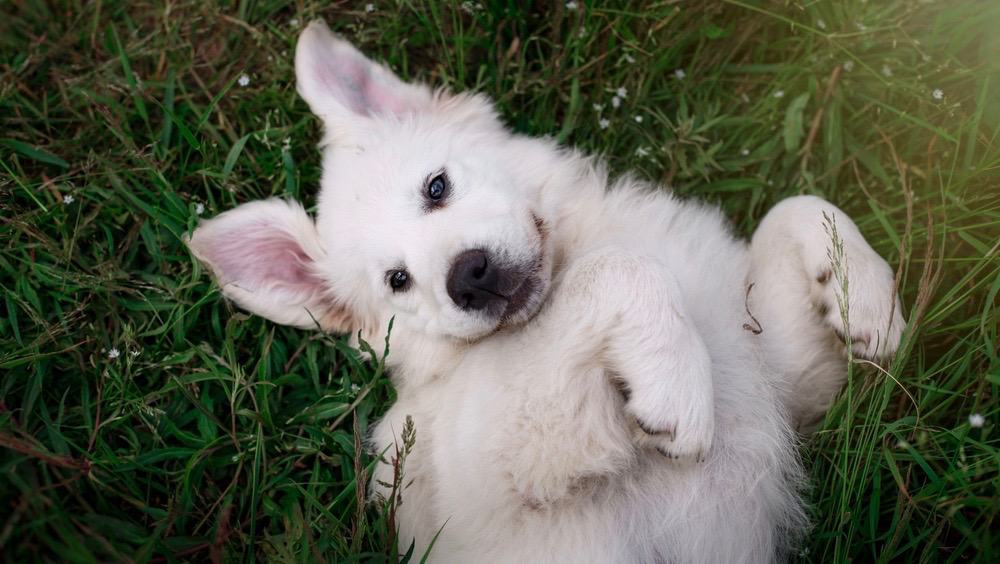
Obviously, once they get bigger, the sheer size of the Great Pyrenees means that in terms of overall volume, he or she sheds way more than any puppy could ever manage!
Are Great Pyrenees Hypoallergenic?
If you’re asking this question, you might need to think twice about getting a dog at all. Pet allergies are very individual, and contrary to popular belief have more to do with skin flakes and saliva than with shed hair.
So, the simple answer is: “No Great Pyrenees are not hypoallergenic, and you should be suspicious of anyone who tells you that a dog breed won’t activate allergic reactions. They may have formed that impression because certain individual dogs trigger their allergies less, but that’s not necessarily going to be true of the whole breed.”
To put it even more simply, there is no such thing as a hypoallergenic dog.
Do Great Pyrenees Smell ?
All dogs have a certain “doggy” odor, but it’s not that strong and not necessarily unpleasant. What Great Pyrenees are known for, on the other hand, is a tendency to flatulence. One gets used to it, and they’re definitely not top of the log for being a bit gassy at times. If it seems excessive, consult a vet.
If you notice bad smells coming off your dog, the first thing to check is whether he or she found some awesome (from a dog’s perspective) smelly stuff to roll in. In that case, it really is bath time!
If any unpleasant odor doesn’t seem to come from a soiled coat, there’s cause for concern. Your dog could be ill or have an abscess you’re not seeing through the thick fur. Get your dog to the vet.
Great Pyrenees Shedding FAQs
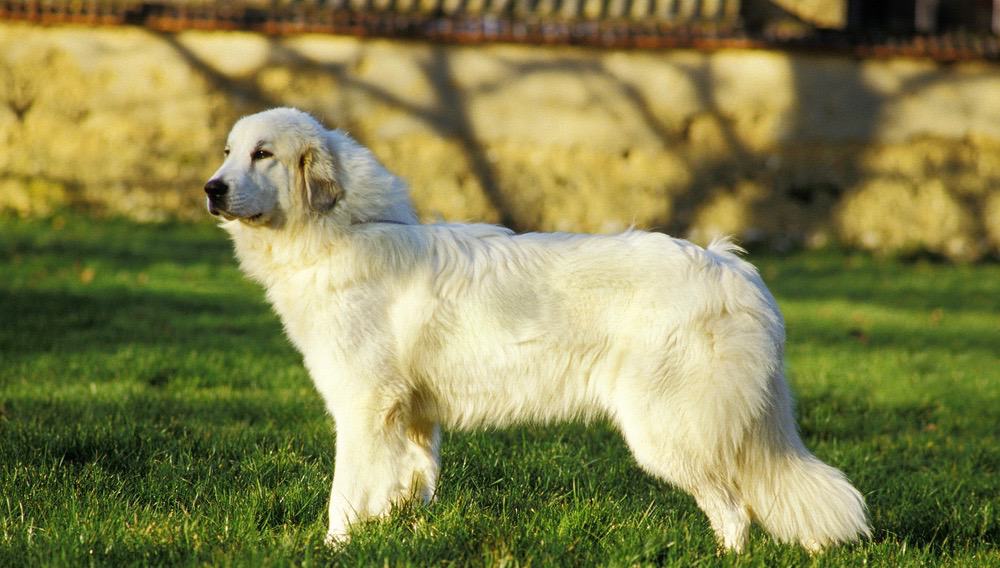
What Time Of The Year Do They Shed The Most
Let’s do a quick recap. Great Pyrenees do shed a lot all year round. In spring, you get the spectacular shedding (also known as coat blowing) that marks your dog’s transition from winter undercoat to summer undercoat.
It has to happen. You shouldn’t even try to stop it from happening. But you can reduce the amount of silky puppy hair that ends up in your house by brushing your dog thoroughly and frequently. It’s worth it.
How Bad Is Great Pyrenees Shedding To Deal With
If you absolutely hate dog hair, don’t get a dog. If you’re just wondering how you and your personal fur factory are going to get along, the answer is “just fine.”
Make your life easier by investing in a vacuum cleaner that is made to handle dog hair, gadgets to brush down your clothes, and of course, grooming tools to brush out loose dog hair on the dog before it can fall out and decorate your home and your person.
You might think that since Pyrs have this wonderful insulating coat, they’ll be happy outside. Think again. They’re really sociable, family dogs, and they will want to be with you as much as possible.
How To Brush Your Great Pyrenees At Home
Once to twice a week, give your Great Pyrenees a good brushing with a “slicker” brush. You can also use a pin brush. The whole job shouldn’t take you much more than thirty minutes, and if your dog is accustomed to it, it becomes a special time together.
During shedding season, and maybe even from time to time outside of it, you might want to add a deshedding brush to your doggy grooming arsenal.
You’ll use it after the usual slicker brush treatment to get at the deep-lying loose hairs the slicker didn’t get to. During coat blowing season, you might want to increase brushing frequency a bit.
How To Protect Your Furniture From Dog Hair
Long before throws became a popular style statement, my mom used to use them to cover up furniture to protect it from doggy hair. They’re easy on, easy off, they look pretty, and when guests come over, you can just remove them altogether.
Your vacuum cleaner is also going to be your buddy from time to time, but if you’re using throws you shouldn’t need to put it to work all that often.
Of course, if you have tightly woven or leather upholstery, it’s just a matter of a little brush off and you’re looking great!
Final Words
Do Great Pyrenees shed a lot? Sure they do! But in return for a little tolerance, you get a big, affectionate dog who is good with kids and will alert you to anyone approaching your home. You also get an intelligent and loving friend who is highly trainable and easy to please.
Are you ready for cuddles? Your Great Pyrenees will want them. And since they definitely do have lots of long hair and they do shed, you’re going to come away looking a bit hairy.
One of my tricks was to keep a big old sweater on for the morning puppy cuddling session or the one on the way to the gate as I’m about to leave home.
There are also some other little tricks. Damp hands, a dmap glove, or a damp sponge work wonders to remove pet hair from clothes, and in my opinion, the doggy cuddling makes the dust-off well worth it.

